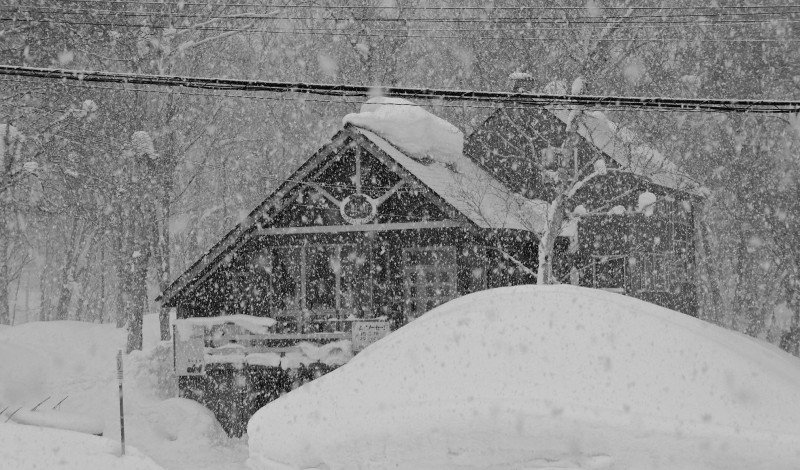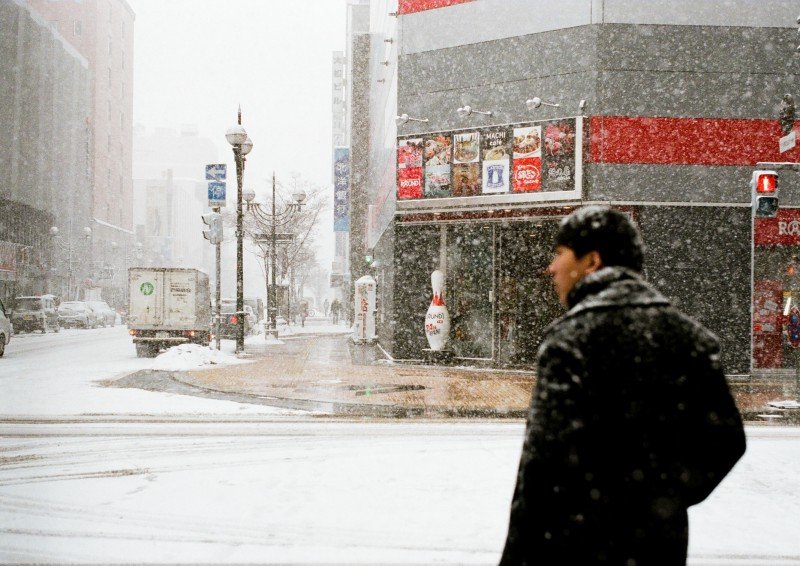Fluffy, light, consistent, and lots of it!
Hokkaido’s powder snow is frequently praised by skiers and snowboarders from around the world as being the “best quality snow” found anywhere. What creates conditions for such snow to fall in Hokkaido? The secret behind Hokkaido’s astonishingly light, dry powder is it’s geographical location. Weather systems bearing south-east from Russia pass over the relatively small Sea of Japan and pick up just enough moisture to unload huge amounts of snow on this fairly isolated island.
In turn, this grants Hokkaido with arguably the most reliable ski season in the world – this is becoming increasingly true as the global climate changes. Although there are still fewer crowds than at large European and North American resorts, the secret is out: if you want to ensure you will get an abundance of snow during your ski holiday, head to Hokkaido.

Nowhere in the world does it snow with such intensity, at such low latitudes, at such low elevations, with such prolific mountain snowfalls.
When does the snow fall in Hokkaido?
In Sapporo, the first snow comes during November, and late January to early February is when the heaviest snowfalls occur. This is when the Sapporo Snow Festival is held and even in downtown Sapporo, you may find around 70-80cm of snow accumulating. This is always a great sign, because that means there’s even more snow at the resorts.
The locals say that during winter it snows somewhere in Hokkaido every day. But in some cities, such as Sapporo and Asahikawa, there can be beautiful sunny days in winter without any snowfall. Sometimes you’ll even have the amazing phenomenon of snow falling out of a sunny sky!

During January, Hokkaido is the best bet for deep powder skiing anywhere in the world. Hence the hashtag #Japanuary that you often see on Instagram.
Hokkaido winter tips
From December through March the average temperature drops sharply and falls below freezing everywhere in Hokkaido. Inland cities like Asahikawa and Furano have lower average temperatures compared to coastal areas. Here are some tips to ensure your group still has big smiles on their faces despite the cold:
Bundle Up: Down jackets will come in handy, as they are light but provide lots of warmth, and a jacket with a hood will be especially useful when it is snowing. Wearing tights or leggings under your pants is a good way to prevent the cold. During winter there are various outdoor events held in Hokkaido – such as the Sapporo Snow Festival. You’ll be spending lots of time outdoors, and will have the most fun if dressed appropriately for the Hokkaido winter.
Watch your Step: The roads in Hokkaido are often frozen during winter. If you do not have proper winter shoes with rugged soles, it can be helpful to attach anti-skid bands to your shoes. During winter anti-skid goods are widely available in various stores, including convenience stores and supermarkets.
Fill your stomach: The cold may make you hungry, and there are lots of great foods to enjoy during winter in Hokkaido. To warm up during a cold day, we recommend ordering some miso ramen, soup curry, jingisukan, or boiled king crab.
Hit the onsen: Hokkaido boasts some of the best onsens (hot springs) in the country with its superb natural environment surrounded by volcanic mountains and spring water. During winter, one of the best experiences in Hokkaido is to soak in a warm natural onsen surrounded by spectacular snowy sights.

Snow facts about Japan
In its snowiest years, Hokkaido’s best known resorts such as Niseko, Rusutsu and Furano can receive up to 16m of the white stuff. To put that in perspective, the annual average of perennial Brit favourite Val d’Isère is between four and six metres.
- The heaviest 24-hour snowfall ever recorded was in February of 1927 on Mt. Ibuki, which saw 230cm in a day.
- Sapporo sees an average of 600cm a year, making it the snowiest city in the world with a population of more than 1,000,000 people.
- Tsunan is the snowiest town in Japan and sees an average snowfall of 13.5m each year.
- Sukayu Onsen (hot spring) records an average 17.6m of snow every winter.
